DFW C-IV / CV / C-VI / LVG C-VI
Solid - wood two-post biplane with mixed lining. The design is quite typical for the German two-seater airplanes of those times. The fuselage is covered with plywood, wings - canvas. Hoods made of aluminum. Racks chassis and biplane box - steel pipes drop-shaped section. On some machines, the engine was fully capped, including the cylinders, and a knock-screw was installed. The author of the project is the chief designer of the company Deutsche Flyugtsoygverk Heinrich Elrich. From the beginning of 1916 C-IV was produced by DFW and Aviatik.
In February 1916, the DFW C-IV began to arrive at the front. In the summer, he was replaced by a CV with a much more powerful engine, which made it possible to sharply raise flight characteristics.
The plane was simple in control and obedient to the pilot of any qualification. He received many good reviews from the front, thanks to which the production of CV deployed several companies at once: DFW, Aviatic, Halberstadt and Schütte-Lanz.
In the beginning of 1917 engineer-designer Mussingsbrod moved from the firm DFW to LVG, organizing there a licensed production of CV aircraft. Machines marked LVG CV differed drop-shaped form of vertical tail and slightly enlarged dimensions.
CV was produced in large series and was actively used on the western and eastern fronts, as well as in Northern Italy, Macedonia, Mesopotamia and Palestine.
Only in the second half of 1917 on the French front there were about 1000 machines of this type. They played an important role in the Battle of Arras and other operations of the German army of that period. DFW remained in service with the first-line units until the conclusion of the truce.
In the spring of 1918, it was developed and launched into the DFW C-VI series with a 200-horsepower motor, drop-shaped "Elfaug" keel, horn compensation for ailerons and an enlarged cab (for ease of handling a turret machine gun). Soon a similar LVG C-VI appeared. Both types were used simultaneously and were very similar, which often led to errors in identification.
In total, more than 500 DFW C-VI and LVG C-VI have been built.
After the withdrawal of German troops from Poland and Ukraine in late 1918 - early 1919 several dozen DFW and LVG of various modifications remained in the territory of these newly created states, which immediately engaged them in border conflicts against each other. Also, there are data on the purchases of such machines by Soviet Russia and their application in the civil war.
ENGINE
"Benz", 150 hp (C-IV) or 220 hp. (CV) or 200 hp. (C-VI).
ARMAMENT
1 sync. "Spandau", 1 turret "Parabellum".
FLIGHT-TECHNICAL CHARACTERISTICS
(DFW C-IV)
Swing, m 13,3
Length, m 7.9
Dry weight, kg 980
Take-off weight, kg 1340
Maximum speed, km / h 160
Time of climb, m / min 2000/15
Ceiling, m 4500
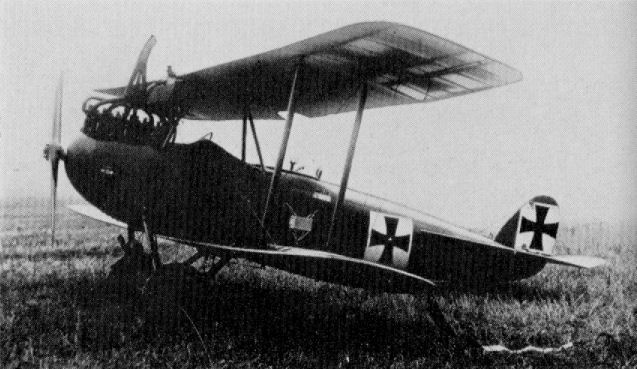
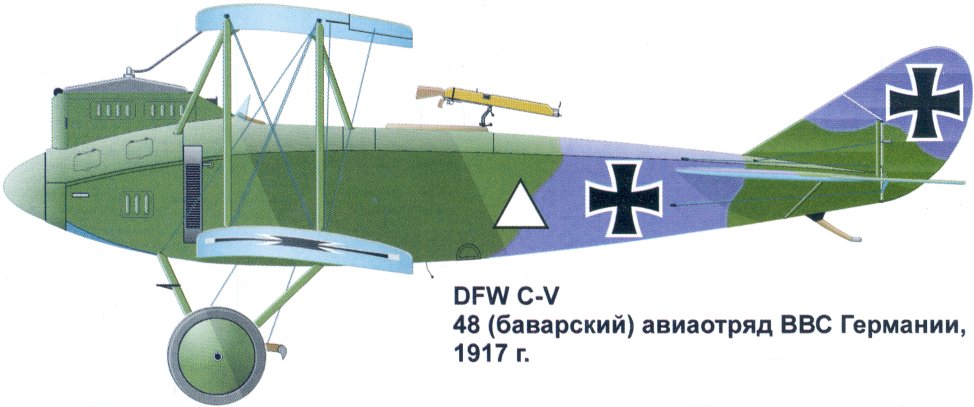
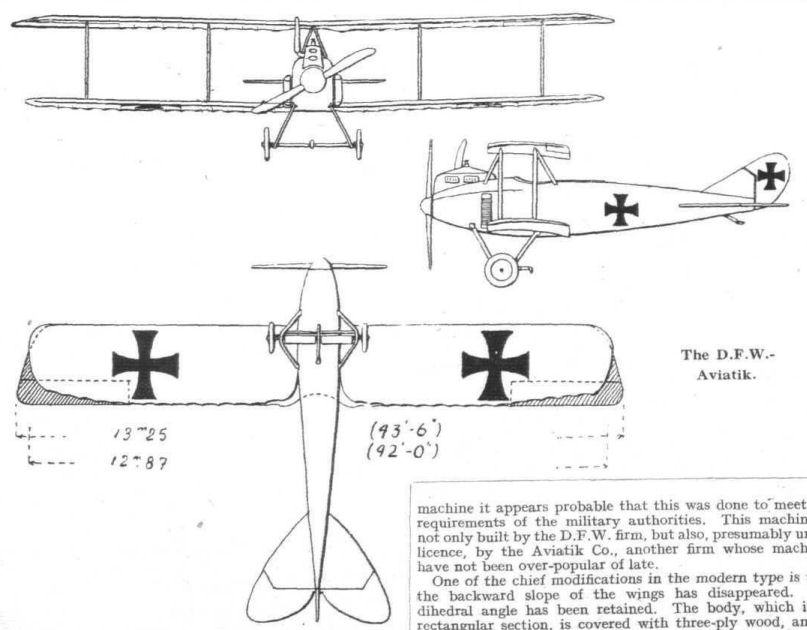
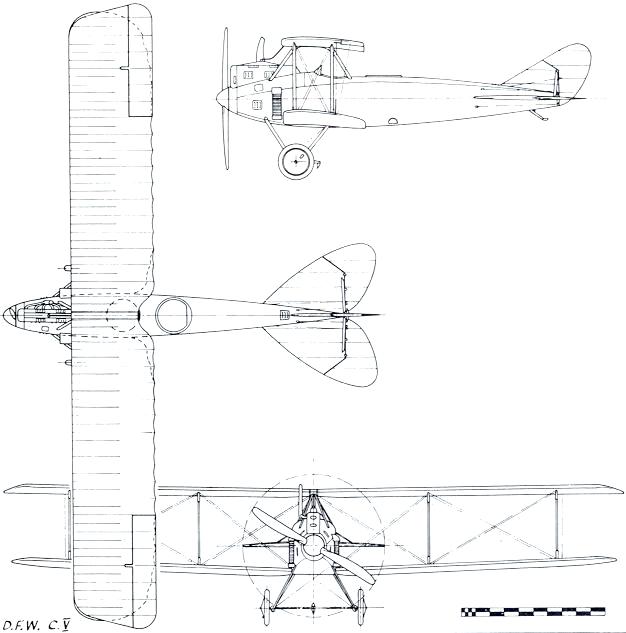
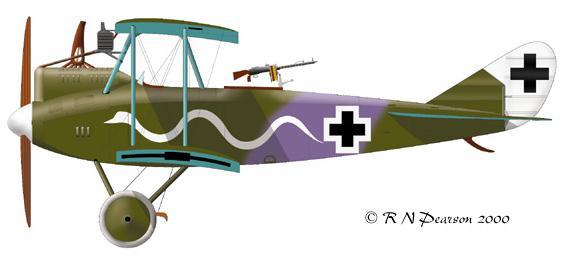
 Author
Topic: DFW C - V (Read 1809 times)
Author
Topic: DFW C - V (Read 1809 times)


